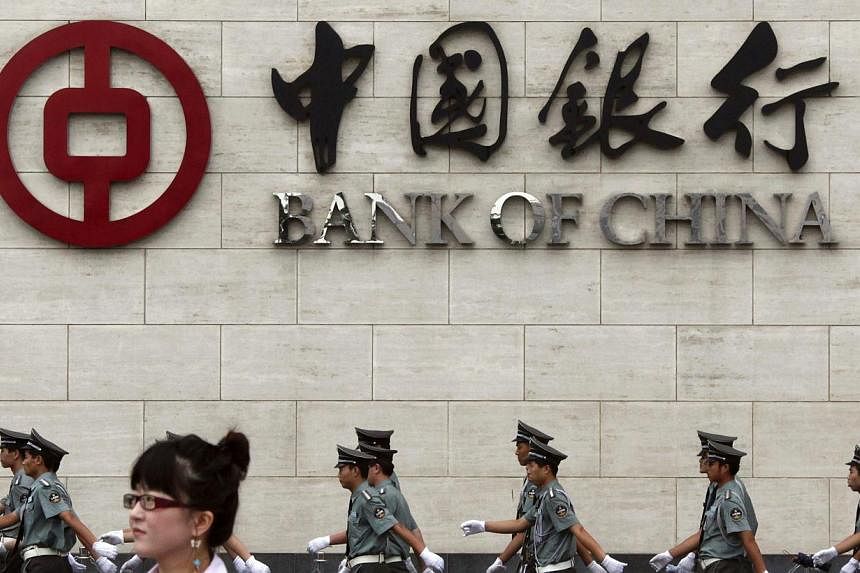SHANGHAI (Reuters) - Chinese bankers welcomed Beijing's decision to cut the level of reserves they must hold, hoping they can put the freed-up cash to profitable use, but struggling Chinese companies hoping it will mean more and cheaper loans are likely to be disappointed.
After a slew of gloomy economic data, the People's Bank of China (PBOC) cut banks' reserve requirement ratios (RRR) by 50 basis points on Wednesday, freeing up an estimated 600 billion yuan (S$129.34 billion) into the money supply.
New lending in December was lower than expected, and that was followed by a surprise shrinking in the factory sector in January and weakening data for the services industry, once a lonely bright spot in the world's second largest economy.
However, economists who spoke to Reuters viewed the RRR cut as a defensive attempt to offset the impact of capital flowing out of yuan assets as the currency slides against the dollar, not stimulative.
Government economists have publicly made similar statements. "Foreign exchange management is not an effective long-term liquidity tool, so you must use other delivery channels," said Ma Jun, central bank chief economist, in a commentary published by the official China Securities Journal Wednesday.
Lu Lei, head of the PBOC's research department, also played down the significance of the move, saying it was not a strong stimulus measure or a policy shift but an ordinary operation based on liquidity conditions, including a spike in demand for cash for the upcoming Chinese New Year holidays.
Bankers who spoke to Reuters said the move was not enough to encourage them to lend more, or lend more cheaply, given the dearth of demand from creditworthy borrowers, an assertion supported by independent surveys of Chinese executives.
"There are too few good clients if your bank is prioritising risk; indeed there are times when you have money, but you can't find ways to lend it out," said a loan officer from one of China's top five banks, who added that his bank frequently found itself with cash in hand and nobody worth lending to.
The move will mean more funds available for investment in higher-yielding money market products, analysts say, and some bankers said they might steer more credit to the safer state-owned enterprises (SOEs).
Chinese state-owned banks are often criticised for preferring to lend to SOEs regardless of their business prospects, because they are guaranteed by the government, which starves the more efficient private sector of capital.
The problem facing banks' loan officers is that smaller companies - both private and local-level SOEs - tend to be lighter on assets that can serve as collateral and their financial statements are less reliable.
Also, for many lenders, especially smaller banks, the relaxation of the reserve requirement doesn't free up capital for loans because they still have to maintain a loan-to-deposit ratio of 75 per cent.
And in China's tightly controlled financial system, lending quotas set by the central bank are more significant determinants of loan volumes.
"For banks, the RRR reduction basically means they can convert some of the loss-making positions (PBOC pays 1.6 per cent p.a. on reserve vs banks' deposit cost of 2 percent or more) into bonds or interbank assets with 4-5 per cent yields," wrote Credit Suisse analysts Victor Wang and Steven Zhu in a research note, adding that the change alone could bump bank profits up 0.9 per cent in 2015. "However, (the) RRR cut has little to do with loan underwriting, which is controlled by PBOC's loan quota."
Economists believe more easing is in the pipeline, and the debate now is over timing and manner.
Since an RRR cut delivers cash, while the cuts to guidance lending rates risks squeezing profit margins, many bankers are hoping for the former, not the latter, said one loan officer. "From the bank's perspective, we hope they cut the reserve ratio again, but not interest rates!"

